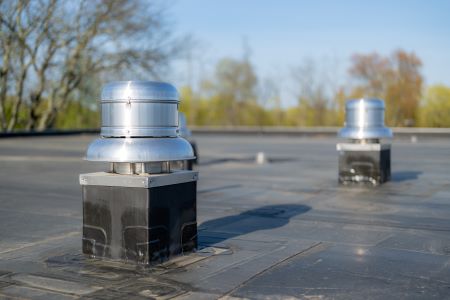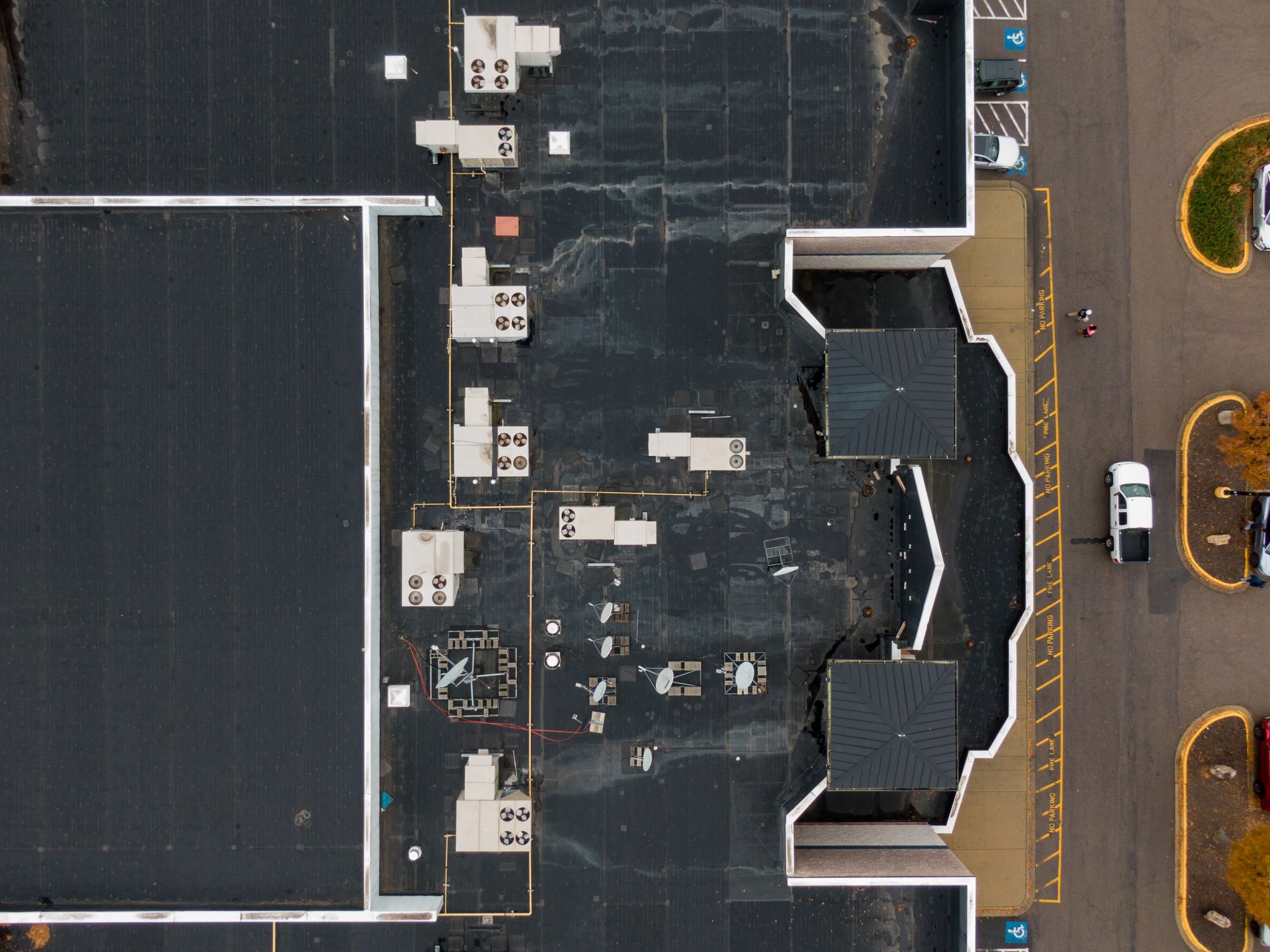Roofs are an integral part of any building, whether residential or commercial. They protect the structure from the elements and provide a comfortable and safe environment for its occupants. In this comprehensive guide, we will delve into the world of commercial roof maintenance, exploring what it entails, why it is essential, and how it differs from residential roof maintenance. We will also discuss the importance of roofing estimates in the maintenance process and provide valuable insights to help property owners and managers make informed decisions about their commercial roofing systems.
Commercial Roof Maintenance Overview
What is Commercial Roof Maintenance?
Commercial roof maintenance refers to a series of planned activities and inspections aimed at preserving the integrity and functionality of the roofing system on commercial buildings. These activities are essential to extend the lifespan of the roof, prevent leaks, and avoid costly repairs or premature replacements. Commercial roof maintenance includes routine inspections, repairs, and cleaning to ensure that the roof continues to perform its primary function – protecting the building and its contents from weather conditions such as rain, snow, wind, and sunlight.
The Importance of Commercial Roof Maintenance
Maintaining a commercial roofing system is crucial for several reasons:
Cost Savings: Regular maintenance helps identify and address minor issues before they escalate into costly problems. This proactive approach can save property owners significant amounts of money in the long run.
Longevity: Proper maintenance can extend the lifespan of a commercial roof, postponing the need for a costly replacement. A well-maintained roof can last significantly longer than one that is neglected.
Energy Efficiency: A well-maintained roof can contribute to energy efficiency by preventing leaks and ensuring proper insulation. This can lead to lower heating and cooling costs for the building.
Safety: Regular inspections and maintenance can identify potential safety hazards, such as loose roofing materials or damaged flashing, and address them promptly to protect occupants and workers.
Compliance: Maintaining the roof in good condition helps ensure compliance with building codes and regulations, avoiding legal issues and potential fines.
Residential vs. Commercial Roofing
Key Differences Between Residential and Commercial Roofing
While the fundamental purpose of residential and commercial roofs is the same – to protect the building and its occupants from the elements – there are several key differences between the two types of roofing systems:
Size and Complexity: Commercial roofs are typically larger and more complex than residential roofs. They often feature different materials, slopes, and configurations to accommodate the specific needs of commercial buildings.
Use and Traffic: Commercial roofs may have to bear heavier loads due to equipment, HVAC units, and foot traffic. This requires additional structural support and different maintenance considerations compared to residential roofs.
Roofing Materials: Commercial roofs often use different materials, such as modified bitumen, single-ply membranes, and metal, which require specialized maintenance techniques.
Accessibility: Commercial roofs are generally less accessible than residential roofs. Access points, such as roof hatches or ladders, need to be designed and maintained to ensure safe and efficient roof inspections and maintenance.
Regulations: Commercial buildings are subject to specific regulations and codes that dictate roofing materials, insulation, and fire safety requirements. Compliance is essential to avoid legal issues and insurance complications.
Maintenance Differences Between Residential and Commercial Roofing
Due to these distinctions, the maintenance of commercial roofs requires specialized knowledge and techniques. Here are some key differences in maintenance practices:
Professional Expertise: Commercial roof maintenance often requires the expertise of commercial roofing professionals who are trained and experienced in working with the unique challenges posed by commercial roofing systems.
Regular Inspections: Commercial roofs typically undergo more frequent inspections than residential roofs, often quarterly or semi-annually, to catch issues early.
Drainage Systems: Commercial roofs often have more elaborate drainage systems due to their larger size, which must be regularly cleaned and maintained to prevent water accumulation and ponding.
Safety Measures: Commercial roofs often require more extensive safety measures and equipment to protect maintenance workers due to the increased risk of falls and other accidents.
Budget Considerations: Commercial property owners and managers need to allocate budgets specifically for roof maintenance and plan for potential repairs or replacements.
Commercial Roof Maintenance Process
Components of Commercial Roof Maintenance
Commercial roof maintenance is a comprehensive process that encompasses several key components:

Roof Inspections: Regular inspections are a cornerstone of commercial roof maintenance. Trained professionals assess the condition of the roofing materials, flashing, insulation, drainage systems, and any other components that make up the roof.
Cleaning: Keeping the roof clean is essential to prevent the buildup of debris, dirt, and organic matter, which can lead to water retention and damage.
Repairs: Any identified issues, such as punctures, leaks, or damaged flashing, must be promptly repaired to prevent further damage to the roofing system and the building’s interior.
Drainage Maintenance: Ensuring that the roof’s drainage system is functioning correctly is vital to prevent water ponding, which can weaken the roof structure and lead to leaks.
Preventive Measures: Some maintenance activities, such as applying roof coatings or sealants, can proactively protect the roof from wear and tear.
Documentation: Proper record-keeping of maintenance activities, inspections, and repairs is crucial for tracking the roof’s condition over time and ensuring compliance with warranties and regulations.
The Role of Roofing Professionals in Commercial Roof Maintenance
Commercial roof maintenance is not a DIY endeavor; it requires the expertise of roofing professionals who are well-versed in commercial roofing systems. Here are some ways in which roofing professionals play a vital role:
Inspections: Trained professionals can conduct thorough inspections to identify hidden issues and assess the overall condition of the roof accurately.
Repairs: Roofing professionals have the skills and equipment needed to perform repairs effectively, ensuring that the roofing system’s integrity is maintained.
Safety: Roofing professionals are trained to work safely at heights, reducing the risk of accidents and injuries during maintenance activities.
Compliance: Roofing professionals are knowledgeable about local building codes and regulations, ensuring that maintenance work is carried out in compliance with the law.
Preventive Maintenance: Roofing professionals can recommend and implement preventive measures, such as coatings and sealants, to extend the life of the roof.
Roofing Estimates in Commercial Roof Maintenance
The Importance of Roofing Estimates
Roofing estimates are a crucial aspect of commercial roof maintenance and management. They provide property owners and managers with essential information about the cost of maintenance, repairs, or potential replacements. Here’s why roofing estimates are essential:
Budget Planning: Roofing estimates help property owners and managers allocate budgets for roof maintenance and plan for future expenses. They provide a clear picture of the financial requirements related to the roofing system.
Decision-Making: Roofing estimates allow property owners and managers to make informed decisions about whether to repair or replace a roof. They provide cost comparisons and help assess the overall value and return on investment.
Prioritization: With roofing estimates, property owners can prioritize maintenance and repair activities based on urgency and available budget. This ensures that critical issues are addressed promptly.
Documentation: Roofing estimates serve as documentation of the scope of work, materials, and costs associated with maintenance or repair projects. They are valuable for record-keeping and warranty claims.
Obtaining Roofing Estimates
Obtaining accurate roofing estimates is essential for effective commercial roof maintenance. Here’s a step-by-step guide on how to get roofing estimates:
Identify Qualified Contractors: Start by researching and identifying reputable roofing contractors with experience in commercial roof maintenance. Look for contractors with positive reviews and a track record of quality work.
Request Site Visits: Invite qualified contractors to visit your commercial property and assess the roofing system in person. A site visit allows contractors to understand the unique characteristics and challenges of your roof.
Provide Detailed Information: Be prepared to provide contractors with detailed information about your roofing system, including its age, materials, previous maintenance history, and any known issues.
Request Multiple Quotes: It’s a good practice to obtain quotes from multiple contractors to compare costs and services. This can help you make an informed decision and ensure that you’re getting a competitive price.
Ask for References: Request references from contractors and follow up with past clients to gauge the contractor’s reputation and the quality of their work.
Review Scope of Work: Ensure that the roofing estimate includes a detailed scope of work, materials to be used, labor costs, project timeline, and any warranties offered.
Consider Long-Term Value: While cost is a significant factor, also consider the long-term value of the roofing estimate. High-quality materials and workmanship may have a higher initial cost but can lead to lower maintenance expenses in the future.
Common Commercial Roof Maintenance Challenges
Common Challenges in Commercial Roof Maintenance
Commercial roof maintenance comes with its set of challenges, which property owners and managers need to be aware of:
Weather Conditions: Commercial roofs are exposed to harsh weather conditions, which can accelerate wear and tear. Proper maintenance is essential to counteract the effects of weather-related damage.
Age of Roof: The age of a commercial roof can impact its maintenance needs. Older roofs may require more frequent inspections and repairs to address natural wear and aging issues.
Budget Constraints: Limited budgets can restrict the extent of maintenance and repair work that can be undertaken. Property owners must prioritize essential repairs and plan for future maintenance needs.
Tenant Occupancy: Tenant-occupied buildings can present challenges in terms of scheduling maintenance work and ensuring minimal disruption to occupants.
Compliance with Regulations: Meeting local building codes and regulations is crucial for commercial property owners. Failure to comply can result in fines and legal issues.
Addressing Common Challenges
To address these challenges effectively, property owners and managers can take the following steps:
Regular Inspections: Implement a robust inspection schedule to catch issues early and prevent costly repairs.
Budget Planning: Allocate funds for roof maintenance and consider long-term cost savings when making budget decisions.
Proactive Maintenance: Invest in preventive measures such as coatings and sealants to extend the roof’s lifespan and reduce the need for frequent repairs.
Tenant Communication: Maintain open communication with tenants to schedule maintenance work at convenient times and minimize disruptions.
Compliance Management: Stay informed about local regulations and work with roofing professionals who are well-versed in compliance requirements.
In conclusion, commercial roof maintenance is a vital aspect of property management, ensuring the longevity, safety, and functionality of commercial roofing systems. It differs significantly from residential roofing due to the larger size, complexity, and unique materials used in commercial buildings. Roofing estimates play a crucial role in the maintenance process, helping property owners and managers plan budgets, make informed decisions, and prioritize maintenance activities.
To successfully maintain commercial roofs, property owners and managers should partner with qualified roofing professionals who can conduct thorough inspections, perform repairs, and provide accurate roofing estimates. It is essential to address common challenges such as weather-related damage, budget constraints, and compliance with regulations to ensure the continued performance of the roofing system.
By investing in regular maintenance and staying proactive, commercial property owners can extend the life of their roofs, reduce long-term costs, and provide a safe and comfortable environment for tenants and occupants. In the ever-changing landscape of property management, commercial roof maintenance remains a crucial aspect of responsible ownership and stewardship of valuable assets.

